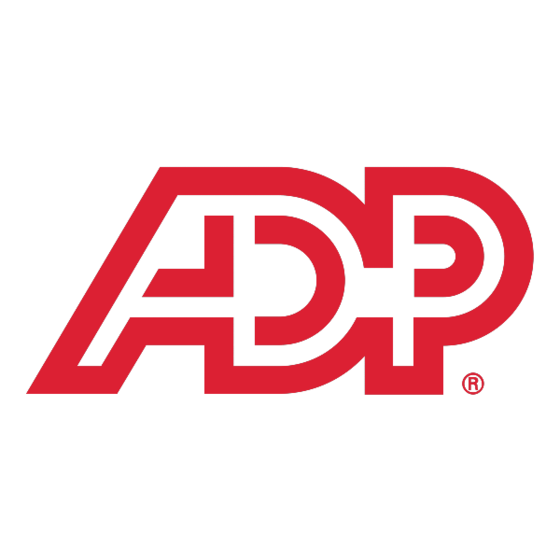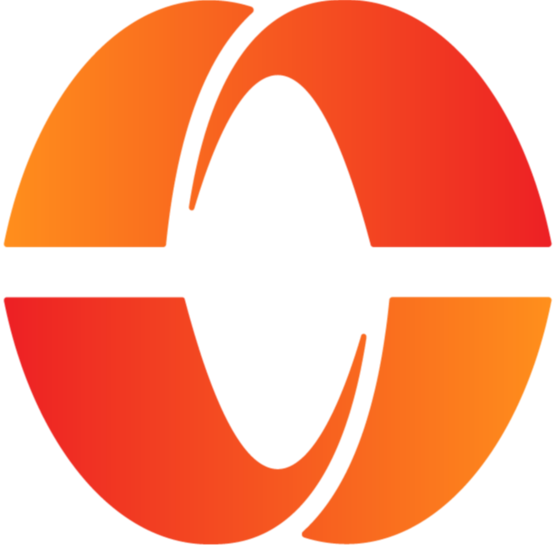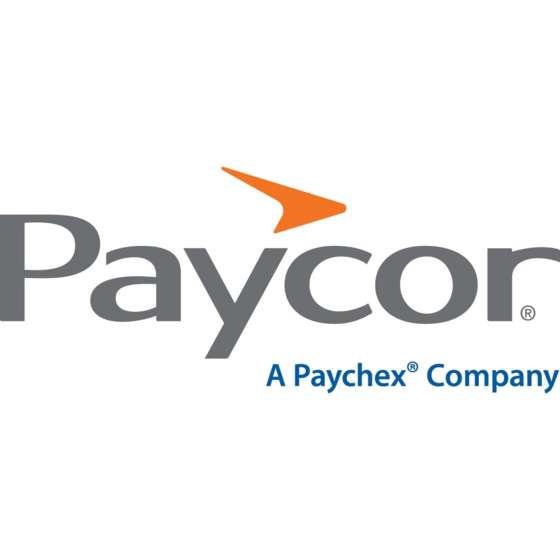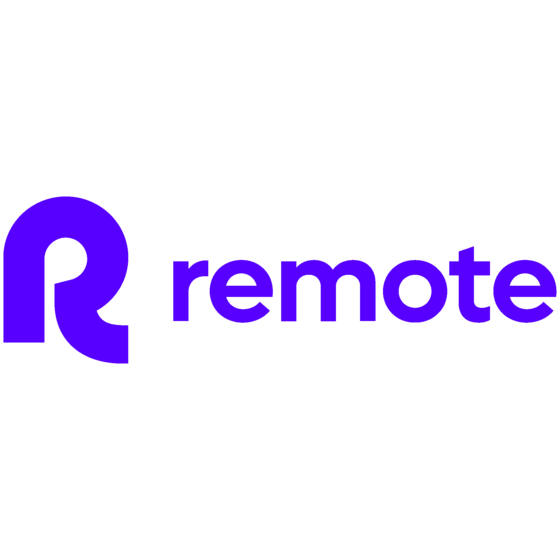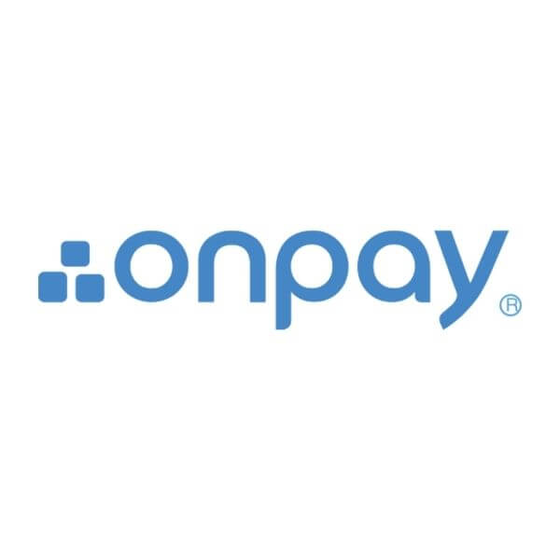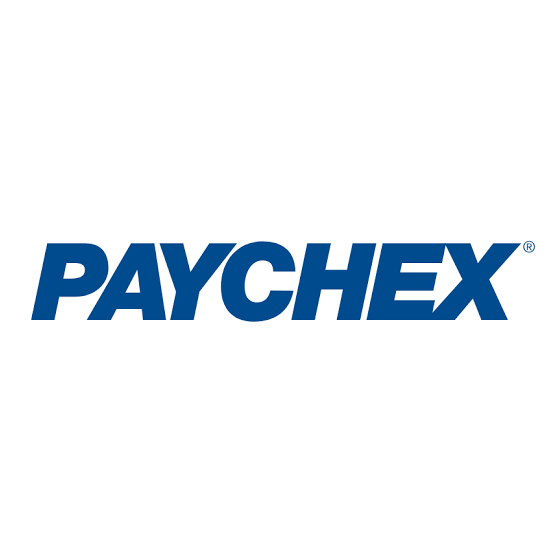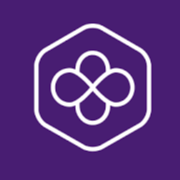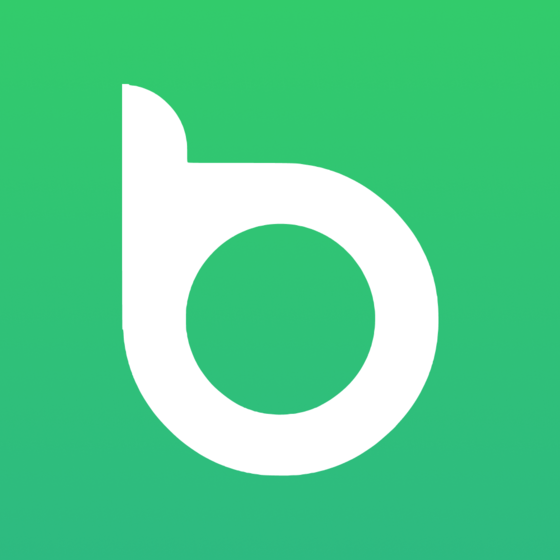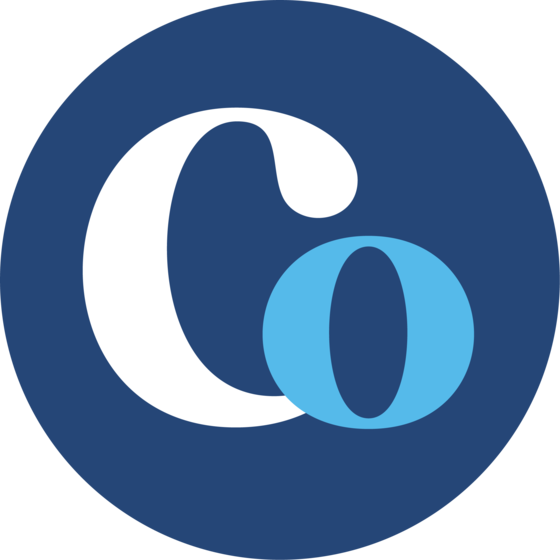10 Best Payroll Software Shortlist
Here's my pick of the 10 best software from the 30 tools reviewed.
Talk through what you’re looking for. Get a custom shortlist based on your needs. No fees.
If your current payroll software is eating up your time with clunky processes, compliance worries, or recurring errors, it’s probably time for an upgrade. In this article, I’ll walk you through the best payroll software tools that actually solve those issues—whether you're managing a distributed team, handling complex tax filings, or just trying to ensure everyone gets paid accurately and on time.
Modern payroll platforms go beyond calculating wages. They automate repetitive tasks, streamline direct deposits, manage contractor and employee payments in one place, generate detailed reports, and keep you compliant with changing tax laws, so you can focus on growing your team instead of fixing spreadsheets.
As someone with hands-on experience managing payroll operations and evaluating software solutions, I’ve reviewed dozens of tools to help HR professionals like you find the right fit. This guide is built to save you time, reduce stress, and help you make a confident switch to something better.
You Can Trust Our Software Reviews
We've been testing and reviewing HR software since 2019. As HR professionals ourselves, we know how critical and difficult it is to make the right decision when selecting software.
We invest in deep research to help our audience make better software purchasing decisions. We've tested more than 2,000 tools for different HR use cases and written over 1,000 comprehensive software reviews. Learn how we stay transparent, and take a look at our software review methodology.
Best Payroll Software: Comparison Chart
This comparison chart summarizes pricing, trial, and demo details for my top payroll software selections to help you find the best software for your budget and business needs.
| Tool | Best For | Trial Info | Price | ||
|---|---|---|---|---|---|
| 1 | Best for compliant payroll in 150+ countries | Free trial + demo available | From $29/month | Website | |
| 2 | Best for small businesses | 90-day free trial | Pricing upon request | Website | |
| 3 | Best for HR, payroll, and integrations in one | Free demo available | Pricing upon request | Website | |
| 4 | Best for automating payroll tasks | 30-day free trial | Pricing upon request | Website | |
| 5 | Best international and local payroll consolidation | Free trial available | From $29/user/month | Website | |
| 6 | Best for global teams in 170+ countries | Free demo available | From $25 - $199/user/month | Website | |
| 7 | Best for niche industries | 30-day free trial | From $40/month + $6/user/month | Website | |
| 8 | Best for accurate payroll processing | Free demo available | Pricing upon request | Website | |
| 9 | Best for integrated compensation benchmarking | Free demo available | Pricing upon request | Website | |
| 10 | Best for expert guidance | Free demo available | From $99/month | Website |
-

edays
Visit WebsiteThis is an aggregated rating for this tool including ratings from Crozdesk users and ratings from other sites.4.3 -

Boon
Visit WebsiteThis is an aggregated rating for this tool including ratings from Crozdesk users and ratings from other sites.4.7 -

ClearCompany
Visit WebsiteThis is an aggregated rating for this tool including ratings from Crozdesk users and ratings from other sites.4.6
Best Payroll Software Reviews
Here you’ll find my detailed overviews of the 10 best payroll solutions I’ve featured. Each overview has information about the platform’s best use case, standout features, and integrations. Plus, there are 20 additional options included below if you’d like even more choices to consider.
Deel is a global payroll platform available in over 150 countries and all 50 U.S. states, ensuring compliance with local regulations. With Deel, you can hire and pay anyone as a contractor or employee without worrying about local laws, complicated tax systems, or international payroll.
Why I picked Deel: I chose this software because it provides end-to-end global workforce management, including contract adjustments, expense reimbursements, and off-cycle payroll adjustments. You can schedule payments in advance and run off-cycle payroll whenever needed.
It's also worth noting that the company has local country experts working in-house to run global payroll and ensure all regional contributions are accounted for. Their team provides 24/7 online support, and dedicated account managers are available for specific requests.
Deel Standout Features and Integrations:
Standout features I noticed were the software's 10+ payment options, ranging from bank transfers to cryptocurrency pay-ins. What makes this stand out from other options is that employees and contractors can self-manage their pay and personal data, and use providers like Wise, PayPal, Payoneer, and Revolut for easy international withdrawals.
Integrations include Ashby, BambooHR, Expensify, Greenhouse, Hibob, NetSuite, Okta, OneLogin, QuickBooks, Xero, Workday, and Workable. The software’s open API can support additional custom software integrations.
Pros and cons
Pros:
- Knowledgeable support staff
- Detailed dashboards
- Add-ons available to localized benefits and global payroll
Cons:
- Limited invoice customization
- Contract templates could be simplified
New Product Updates from Deel
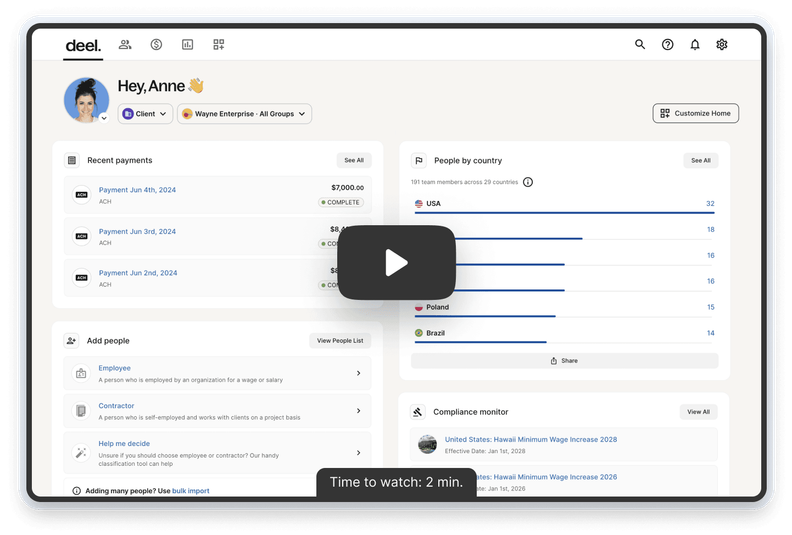
500+ New Platform Enhancements for Global Hiring and Payroll
Deel announced over 500 platform enhancements focusing on global hiring, HR, payroll, and AI-driven compliance, featuring tools for faster hiring, smarter HR management, strategic planning, and enhanced payroll flexibility. For more details, visit the source: Deel Blog.
RUN by ADP is a comprehensive payroll and HR software solution designed to enhance payroll processing and human resource management for small businesses.
Why I picked RUN by ADP: I like its comprehensive suite of features tailored to meet the needs of small businesses. One of the most significant advantages is its ability to automate payroll processes, including tax calculations and filings. This feature not only saves time but also reduces the risk of errors, ensuring compliance with federal and state regulations.
The software also automatically calculates benefits and retirement deductions, and it customizes the experience based on the specific needs of the business and its employees.
RUN by ADP Standout Features and Integrations:
Standout features include AI-powered error detection that learns your payroll and proofs your data for you, flagging potential errors before they happen. It also offers direct deposit, multi-jurisdiction payroll, job costing, and a range of HR functions, like background checks, new employee onboarding, and forms and documents.
Integrations include Quickbooks, Wave, Xero, ClockShark, Points North, TruSaic, Compy, Wex, Synerion, JazzHR, 7Shifts, Snappy Gifts, Absorb LMS, SmartRecruiters, and hundreds more.
Pros and cons
Pros:
- Good integrations
- Employee self-service portal
- Good mobile app
Cons:
- Most HR functions are only available on higher-tier plans
- Setup can be complex
Paylocity is an all-in-one payroll and human resources platform built to help businesses manage their workforce efficiently.
Why I picked Paylocity: When it comes to payroll, Paylocity helps you run payroll accurately and on time with automated tax calculations and filings. You can manage deductions and garnishments, ensure compliance with wage and hour regulations, and track payments for direct deposits or paychecks.
The system also provides detailed payroll reports that let you analyze labor costs and payroll data in real time. This way, you can keep track of everything from overtime to tax liabilities, without needing manual calculations or separate tools.
I also like that it's tightly integrated with its HR features, allowing you to manage processes outside of payroll, such as talent management, shift management, learning, and time tracking.
Paylocity Standout Features and Integrations:
Standout features include expense management, tax services that cover all 50 US states, on-demand payments, managed garnishment services, and global payroll abilities covering 100+ countries.
In addition to Paylocity's payroll features, their software also includes time and labor management tools that let you track employee attendance and manage shift schedules. Its talent management tools allow you to set up performance reviews and manage employee development.
In addition, the benefits administration feature helps your team handle employee health plans, retirement options, and other benefit packages.
Integrations include over 400 third-party tools across recruitment, productivity, communication, and benefits management, like ClearStar, Microsoft Dynamics 365, 7shifts, AirMason, APA Benefits, Azure, Atlassian, Asana, Box, ClearCompany, Dropbox, Freshdesk, Google Workspace, Greenhouse, HubSpot, Slack, Salesforce, Trakstar, and Zoho People.
Pros and cons
Pros:
- Includes tax compliance services
- On demand payment options
- Includes performance management features
Cons:
- Setup can be time consuming
- Lacks support for independent contractor payments
Paycor is a human capital management solution with payroll, workforce management, and employee experience features. The payroll product can handle payroll, expense management, time and attendance, and more.
Why I picked Paycor: Paycor offers automation features to run payroll automatically, as scheduled for a specific day and time. Multiple payment options are available through the software, including direct deposit, paycards, or on-demand pay.
It also provides in-depth compliance feedback to help you respect the employment laws in your state. Because of its robust functionality, I think it's best suited to large and enterprise businesses.
Paycor Standout Features and Integrations:
Standout features include its pay-on-demand feature, which allows employees to access their earned wages before their next official payday — a very modern functionality that not all payroll providers offer.
It's also convenient that expense management, scheduling and time tracking, and employee experience monitoring are all also available in the platform.
Integrations include several other tools for wage and salary verification, expense management, employee wellness, certified payroll, and FMLA. Key software systems to note include Certify, ESR, Payfactors, and WageWorks.
Pros and cons
Pros:
- All-in-one solution well suited to enterprise businesses
- Live and on-demand product training and industry webinars
- Mobile app allows for payroll management on the go
Cons:
- Time cards are a bit simplistic
- UX can be a little clunky at times
Remote empowers companies of all sizes to pay and manage full-time and contract workers around the world. Remote makes it possible for users to take care of international payroll, benefits, taxes, stock options, and compliance in over 50 countries.
Why I picked Remote: Their payroll software makes it easy to onboard and pay your contractors and employees in one modern, secure, cloud-based platform, freeing you and your team up to focus on more strategic work.
Through Remote’s platform, you’ll have access to your most important employment documents, data, and HR processes, while Remote takes care of your localized payroll, benefits, compliance, IP protection, and taxes wherever your team works.
Their platform is managed by a network of HR and legal experts who stay on top of the nuances, changes, and complexities of local regulations to ensure full compliance with all relevant legislation at all times, giving their clients peace of mind.
Remote Standout Features and Integrations:
Features include full-service global payroll, expertly-managed compliance tracking, and a centralized platform to manage all your employee and payroll data efficiently.
Remote also partners with powerful HR systems to connect people, payroll and HR data. Through Remote’s global employee API and native partner integrations, Remote empowers partners to leverage its global infrastructure in their offerings and help more customers scale their global teams faster.
Integrations are available with 25+ software applications including Workday, BambooHR, Greenhouse, Gusto, Hibob, Personio, Slack, Xero, and other systems. Users can also connect Remote with over 5,000 external apps via the Zapier integration.
RemoFirst is a payroll software that provides users with a secure, efficient, and easy-to-use platform for managing payroll processes in 170+ countries. Users can input employee information, calculate taxes, and generate pay stubs. The software offers many features, including employee self-service, direct deposit, tax compliance, and reporting.
Why I picked RemoFirst: Using RemoFirst, you can manage payroll and invoicing for businesses with employees abroad. The software automatically generates accurate paychecks and invoices in the local currency and tracks employee vacation days, sick leave, and expense reimbursements.
RemoFirst sends invoices every month, ensuring your employees are paid on time. Users can access a dedicated account manager and RemoFirst's knowledge base to troubleshoot any issues.
RemoFirst also lets businesses manage employee benefits programs with ease. Users can track employee eligibility, enroll employees in benefits plans, and even change existing plans. It also allows businesses to generate employee enrollment and participation reports. Dashboards summarize team distribution and spending with visual graphs and charts.
RemoFirst Standout Features and Integrations:
Features include a cost calculation tool that helps businesses budget costs effectively by considering various factors, including the number of employees, the type of benefits provided, and the frequency of payments.
Employees can also view their equity and bonus information in real time, and the system automatically calculates vesting schedules and payout dates.
Other features include tools for managing employee shares and dilution, plus tools to issue specialized reports on equity and bonus activity. Its reporting feature allows users to generate detailed reports on their payroll data which can be generated for a specific period.
Integrations include ADP.
Pros and cons
Pros:
- Dedicated account managers
- Customizable dashboards
- Multi-currency abilities within a single payroll run
Cons:
- Lacks extensive integrations
- No mobile app available
OnPay’s payroll platform helps organizations with payroll processing, managing HR functions, and integrating employee benefits, all in one place. Their software includes a full suite of payroll services and compliance settings for the US, covering all 50 states.
Why I picked OnPay: I picked this company because special payroll services are offered at no additional cost for niche industries like restaurants, farms and agriculture, churches and clergy, and nonprofits.
They provide great customer service in addition to the payroll platform, which is helpful when you have specific business needs. Platform specialists are available to help you set up your payroll process and automate your taxes, even if you don’t have any previous experience with this kind of software.
OnPay Standout Features and Integrations:
Standout features include their team of licensed in-house insurance brokers. I like that they can help you set up health, dental and vision plans with top providers such as Humana, Cigna, Blue Cross / Blue Shield, and UnitedHealthcare. You can also set up a 401k integration that supports employer matching and profit sharing arrangements.
Integrations include Deputy, Magnify, Mineral, PosterElite, QuickBooks, When I Work, Xero, Guideline, and Vestwell.
Pros and cons
Pros:
- QSEHRA payments can be made
- Clean, intuitive user interface
- A team of specialists come with the cost
Cons:
- Employee files can be a bit complex
- Integrations can be a bit tricky to set up
Paychex Flex is a cloud-based payroll and human resources management software designed to help businesses of all sizes manage their payroll processes, employee benefits, and other HR-related tasks.
Why I picked Paychex Flex: It's a comprehensive solution that aims to simplify and streamline the entire payroll process, making it easier for businesses to stay compliant with tax regulations and ensure their employees are paid accurately and on time.
Using Paychex Flex, you can track your team’s daily hours, manage time sheets, approve PTO, and oversee benefits in one place. You can also schedule your payrolls and approve them before payday with ease, or schedule multiple runs in the same pay period, and oversee your work on the mobile app.
The solution also gives you access to extra HR features as add-ons for additional fees.
Paychex Flex Standout Features and Integrations
Features include payroll processing, payroll tax filing, a garnishment payment service, paycheck preview and approval, new-hire reporting, and a mobile app.
Another useful feature is the self-service portal where employees can access digital copies of their pay stubs, see their contributions, and manage their retirement accounts, making it easy for them to access their data.
Integrations include Ashby, BambooHR, Clover, Deputy, HIREtech, iCIMS, Indeed, Oracle Netsuite, QuickBooks Payroll, and others.
Pros and cons
Pros:
- 24/7 specialized service for US clients
- Knowledgeable representatives
- Helps you save time with payroll filters and saved views
Cons:
- Adding pay categories could be easier
- Automatically creates multiple subfolders, making it difficult to find the right files at times
Trinet is a global payroll and HR software and service provider. It can help your organization manage various HR operations including payroll and employee benefits administration, performance and learning management, and risk mitigation.
Why I picked Trinet: I picked this platform because its payroll capabilities can handle complex regulations in several countries, making it suitable for global organizations or businesses operating in multiple locations. It can also manage worker's compensation claims, retirement plans, and employee benefits packages. Time tracking is included, which connects exact employee hours with their pay.
Trinet Standout Features and Integrations:
Standout features are definitely the software's compensation benchmarking capabilities, which stood out to me in my testing. The data is verified by Salary.com and covers 15,000 different job titles and 225 industries, helping you craft a better, more competitive compensation structure.
Integrations include QuickBooks, Oracle NetSuite, Sage Intacct, BambooHR, Lattice, Greenhouse Software, Carta, and Xero.
Pros and cons
Pros:
- Global payroll management for multinational businesses
- Centralizes all of your HR processes in one platform
- Company provides HR consulting as well as software
Cons:
- Robust system, comes with a learning curve
- Full functionality may not be needed
Bambee's cloud-based HR software is specifically tailored for small and medium-sized businesses. Their software covers a wide range of functions, including onboarding, compliance, and employee termination. They also offer a guided payroll service, which is available as an add-on.
Why I picked Bambee: I included Bambee's combined payroll software and expert services because of its ease of use and affordability. Their services cover a comprehensive set of payroll functions, including 2-day direct deposit, tax filings, and year-end reporting. In addition, Bambee also offers personalized support from HR experts, as well as a dedicated HR manager for every client, making it easier for businesses to navigate complex payroll regulations.
Bambee Standout Features & Integrations:
Features include 2-day direct deposit, integrated compliance monitoring, and automatic federal, state, and local taxes. They also provide businesses with guidance on payroll-related compliance issues, such as minimum wage requirements and overtime rules too. Their employee self-service portal also allows employees to view their pay stubs, manage their personal information, and request time off, all without having to contact HR, saving businesses time and resources.
Integration details are currently not available.
Other Payroll Software
Here are a few more options that didn’t make the best online payroll software shortlist. If you need additional suggestions for software to help you process payroll, check these out:
- GoCo
For flexible payroll systems
- Buddy Punch
For integrated employee time tracking
- PrimePay
For early wage access through paycards
- UZIO
For integrated benefits
- Namely
For SMBs
- Insperity
For combined software and services
- Wagepoint
For Canadian-based small businesses
- Knit People
For startups
- FinancePal
For payroll outsourcing
- Rippling
For global payroll with tons of integrations
- BambooHR
For employee self-service
- Justworks
For salaried and hourly employees
- QuickBooks Payroll
For customer support
- Papaya Global
End-to-end workforce management
- ADP Workforce Now
For scalable payroll
- Humi
For Canadian SMBs
- Oyster HR
For hiring in 180+ countries
- ADP TotalSource
For self-service features
- Patriot Payroll
For US companies
- Eddy
Full-service payroll software including hiring and onboarding
Related HR Software Reviews
If you still haven't found what you're looking for here, check out these other related tools that we've tested and evaluated:
- HR Software
- Recruiting Software
- Employer of Record Services
- Applicant Tracking Systems
- Workforce Management Software
- Learning Management Systems
Selection Criteria for Payroll Software
To find the best payroll software, I focused on tools that directly solve the common pain points HR professionals face, like time-consuming data entry, error-prone calculations, and complex compliance requirements.
My recommendations are based on in-depth research, recent market trends, and my firsthand experience managing payroll through a human capital management system over the years.
Here’s what I looked for when evaluating each payroll platform:
Core Payroll Software Functionalities (25% of total score): To be considered for inclusion in my list of the best payroll software, each solution had to offer the following functionalities first:
- Automated calculations for wages and taxes
- Payment processing including direct deposit for employee paychecks
- Compliance with federal, state, and local tax laws
- Tools to generate and distribute employee pay stubs and tax forms
- Digital pay stubs that are accessible to employees through a self-service portal
- Integration capabilities to sync data with time tracking and other HR systems to reduce manual data entry
Additional Standout Features (25% of total score): To help me uncover the best payroll software out of the numerous options available, I also took note of any unique features, including:
- Sophisticated features, such as pay-on-demand or earned-wage-access
- Advanced analytics and reporting capabilities
- Customizable payroll workflows
- Enhanced security features, such as multi-factor authentication
- Additional integrations with a broader range of HR and financial systems, including bookkeeping systems and benefits administration systems for health insurance
Usability (10% of total score): To evaluate the usability of each payroll system, I considered the following:
- An intuitive design and user-friendly interface that simplifies complex processes and requires minimal training to master
- Quick access to essential features without overwhelming users
- A user-friendly mobile experience or dedicated mobile apps for Android and iOS mobile devices
- Role-based access control that's straightforward to configure
Customer Onboarding (10% of total score): To get a sense of each software provider's customer onboarding process, I considered the following factors:
- Quick setup processes and clear guidance for first-time users, including customizable templates
- Multimedia training materials such as videos or interactive tutorials
- Support systems like chatbots and webinars to guide new users through the initial learning curve
- Support for migrating historical employee data into the new platform
Good customer support is essential, especially when dealing with things like payroll and benefits. You need to know that if something goes wrong, you’ll have quick access to help.
Customer Support (10% of total score): To evaluate the level of customer support each vendor offered, I considered the following:
- The availability of multiple support channels, including email, phone, and chat
- The existence of a self-service knowledge base, FAQ repository, or other self-help resources to speed up troubleshooting
- The overall quality, responsiveness, and helpfulness of the support team during customer onboarding and post-purchase, as inferred from customer reviews
- The existence of dedicated account managers
- Whether the company offers full-service payroll services, or any additional HR support services
Value for Price (10% of total score): To gauge the value of each software, I considered the following factors:
- The availability of free trials or demos to test the software before purchasing
- Transparent pricing models that clearly explain which payroll features are included at each level, with no additional hidden costs for training or set-up
- Tiered pricing plans that cater to different business sizes, from small to medium-sized businesses (SMBs) up to large businesses and enterprise-level organizations
Customer Reviews (10% of total score): Evaluating customer reviews is the final element of my selection process, which helps me understand how well a product performs in the hands of real users. Here are the factors I considered:
- Whether a product has consistently high user ratings across multiple review platforms, indicating a broad level of user satisfaction
- Specific praises, criticisms, or trends in customer feedback that indicate the software's strengths or areas for improvement
- Whether customer feedback specifically mentions issues with ease of use, customer support responsiveness, or lacking features
- Any testimonials that highlight how a platform solved a particular challenge or adapted to changing payroll needs
Using this assessment framework helped me identify the payroll software that goes beyond basic requirements to offer additional value through unique features, intuitive usability, smooth onboarding, effective support, and overall value for price.
When selecting a system, it’s important to first map out what your core needs are. Think about things like payroll, compliance, and employee management—if these aren’t handled properly, it’ll cause a lot of headaches down the line.
How to Choose Payroll Software
Payroll software can eliminate manual data entry and help you pay employees or contractors with ease. To help you figure out which payroll software best fits your needs, keep the following points in mind:
- What payroll challenges are you trying to solve? Identifying your current payroll challenges will help you understand the specific payroll features and functionalities you want in your new payroll system.
- Common challenges may include: Timesheet data that isn't integrated, an inability to process payroll in multiple currencies, or too many manual steps within your payroll process.
- What outcomes are important and how will you measure success? Being clear on your desired outcomes upfront is crucial to avoid wasting valuable time. For example, you may want to provide more flexible payment options for your employees, such as on-demand pay.
- Who are your main users? Consider your different user groups — power users, administrators, managers, employees, etc. — and their unique needs, to ensure they're all met. You'll need to evaluate if it'll just be your HR professionals, select accounting staff, or your entire finance and HR departments that need access.
- What is your budget? Determining a realistic budget for your new payroll system up-front is crucial, so you don't waste time considering software that's too expensive.
- Do you require specific software integrations? Clarify whether your new payroll platform will replace any existing tools or need to integrate with them, such as accounting, time-tracking, HR, or PEO software. Can you replace multiple tools with one consolidated HR and payroll platform?
- Does the payroll software satisfy your technical requirements? Consider the software selection alongside your existing workflows and operating systems. Evaluate what's working well, and any problem areas that need to be addressed.
Remember, every business is different — don’t assume that a payroll system will work for your organization just because it's popular. Instead, focus on your specific challenges and the features your new system will need to address them.
Trends in Payroll Software for 2025
When it comes to people management, nothing matters more than ensuring payroll runs smoothly. That’s why keeping up with payroll software trends is essential, not just for efficiency, but also to stay compliant and meet evolving employee expectations.
The latest trends are reshaping how HR teams manage payroll, address legal complexities, and deliver a better employee experience.
Here are five key developments to watch:
- AI-powered automation: Modern payroll tools use artificial intelligence (AI) to automate repetitive tasks, catch anomalies, flag compliance issues, and minimize costly errors. These smart systems streamline workflows and handle increasingly complex payroll regulations with greater accuracy.
- Global payroll management capabilities: As companies expand internationally, tools like Deel and Papaya Global offer seamless multi-country payroll, currency conversion, and compliance management in one platform.
- Stronger data security: With rising cybersecurity threats, payroll systems are reinforcing protections with features like two-factor authentication, encryption, and biometric login options to safeguard sensitive data.
- Mobile access: With remote and hybrid work here to stay, mobile-optimized payroll software ensures that both employees and HR teams can access key payroll features anytime, anywhere.
- Financial wellness integrations: Many platforms now offer features that help employees track income, plan finances, and access real-time pay insights, supporting both retention and financial well-being.
These trends reflect a growing focus on automation, security, global scalability, and employee empowerment—all essential for modern payroll management.
What is Payroll Software?
Payroll software is a digital tool that automates employee wage calculations, tax deductions, and direct deposits.
It helps HR and finance teams pay employees accurately and on time while staying compliant with tax laws.
Used by businesses of all sizes, payroll software reduces manual work, prevents costly errors, and simplifies complex payroll processes, saving time and ensuring peace of mind.
Features of Payroll Software
Modern payroll software comes packed with features designed to simplify the complex and time-sensitive task of paying your team. Whether you’re managing salaried employees, hourly workers, or a mix of both, payroll software automates calculations, ensures compliance, and keeps your processes running smoothly.
Here's a summary of the core features in today’s modern payroll systems:
- Automated payroll processing: The software must be able to process your employee’s pay, including automatically calculating wages, deductions, and taxes. This eliminates manual errors and saves time, making the process more efficient.
- Direct deposit: Pretty much all payroll software allows employers to pay their staff directly into their bank accounts. This eliminates paper-based processes and provides a better experience for employees and payroll staff.
- Tax compliance forms: Compliance requirements require payroll software to prepare year-end tax forms for employees, such as W2's or T4's.
- Customizable payroll reports: The ability to customize your payroll reports to track payroll taxes, employee deductions, and other expenses can help with budgeting and financial forecasting.
- Data management: Payroll software typically includes an employee database to store key details such as salaries or hourly rates, position levels, emergency contacts, social insurance numbers, and other employment details.
- Unique payment options: This might be unlimited payroll runs or pay-on-demand options to make payments between designated pay days.
- Time-tracking: Especially for hourly workers, having timesheets and scheduling built into your payroll system can really streamline your processes.
- Compensation management: This includes being able to track different pay rates (salary, hourly, overtime, vacation pay, PTO, etc.). It can also mean tracking salary increases over time.
- Self-service employee portals: These portals allow employees to proactively access and update their own personal information, access pay statements, and submit time off requests or expense reports. This is an important feature since it simultaneously empowers employees and reduces demands on your HR staff.
- Analytics: Dashboards, graphs, and reports to analyze payroll data to gather insights about your staff. These analytics support your organization’s workforce planning efforts.
These features work together to create a more efficient payroll process, reduce administrative overhead, and give your team greater confidence that payroll is being handled correctly—every time.
Benefits of Payroll Software
Payroll software offers several benefits for organizations as a whole, and for those who use the software regularly to manage payroll processes. As you're evaluating the different options for payroll software, understanding these main benefits is key to making an informed decision.
Payroll software delivers major advantages for both HR teams and the wider organization. If you’re comparing options, here are the several benefits to help guide your decision:
- Saves time and reduces costs: By automating time-consuming tasks like tax calculations, direct deposits, and timesheet processing, payroll software dramatically cuts down on manual work. This efficiency translates into labor cost savings and fewer errors across pay runs.
- Boosts compliance and accuracy: With built-in tax updates and automatic regulatory changes, cloud-based payroll tools help reduce the risk of costly compliance mistakes. You stay ahead of changing laws—without needing to track every update yourself.
- Protects sensitive data: Modern systems use encryption, secure storage, and role-based permissions to keep employee data safe. This is a significant upgrade from spreadsheets or paper records, helping you meet data protection standards with ease.
- Provides integrated reporting and insights: Many payroll tools connect with broader HR or finance systems, allowing you to generate reports on payroll, budgets, headcount, and more. These insights support smarter workforce planning and financial forecasting.
- Empowers employees with self-service tools: With employee portals, staff can view pay stubs, update personal details, and download tax forms on their own—cutting down on admin requests and improving the employee experience.
Together, these features help payroll software streamline complex processes, boost compliance, and make life easier for both payroll administrators and employees.
Costs & Pricing for Payroll Software
As you explore the different payroll options on the market, it's important to understand the full range of plans and pricing structures that are available.
Payroll software varies in price depending on the type of payroll services and features that are included. Often, you’ll pay a monthly base fee and an additional fee for every active employee on your payroll register.
To give you a general sense of what you can expect to pay for different payroll software packages, I've compiled the most common plan levels into this table:
Plan Comparison Table for Payroll Software
| Plan Type | Average Monthly Fee | Average Price per Employee | Common Features |
| Free | $0 | $0 | Basic payroll processing for a limited number of employees, basic tax calculation, and limited reports. |
| Basic | $10 - $25 per month | $2 - 4 per employee, per month | Payroll processing for a limited number of employees, basic tax filing, standard reports, employee self-service portal |
| Professional | $25 - $40 per month | $4 - $6 per employee, per month | Multi-state or province payroll, additional reports, HR features, compliance report + all the features in Basic. |
| Advanced | $40 - $60 per month | $5 - $8 per employee, per month | Customizable reports, advanced HR tools, integrations, enhanced security + all the features in Professional. |
| Enterprise | Custom pricing | Custom pricing | Scalable for a large number of employees, dedicated support, advanced analytics, custom integrations + all features in Advanced. |
| Global Payroll | Usually priced per employee | $199 - $500 per employee, per month | Ability to pay employees in multiple currencies, international direct deposit, international compliance monitoring, dedicated support + required Basic features or higher. |
In addition to the prices above, some payroll vendors may also charge a one-time set-up fee for complex software implementations.
If you only have a small number of employees, you can likely get started with a free or basic plan initially. However, there are several reasons why you may want to opt for a more advanced plan, including:
- Growth in Employee Numbers: As your company expands, your payroll processing needs will also increase. Advanced plans can handle higher volumes of payroll transactions and offer better tools for managing a larger workforce.
- Need for Additional Features: You may find you need more advanced payroll software that offers features like automated tax filings, direct deposit, benefits management, compliance tracking, and detailed financial reporting, which aren't included in your current plan.
- Increased Complexity in Payroll Requirements: If your business has complex payroll requirements (e.g., new employees in multiple states or countries) you might need software with more sophisticated capabilities to handle varying tax laws, regulations, and multi-currency payments.
- Enhanced Customer Support: More comprehensive plans often come with better customer support, including dedicated support teams, quicker response times, and more personalized assistance, giving you additional peace of mind.
- Integration with Other Systems: If your current payroll software or plan doesn't integrate seamlessly with the other systems your business uses (such as human resources management systems, accounting software, or time tracking tools), then it's time to find a better fit.
Ultimately, it's important to secure a plan that offers the features you need to serve your current needs and solve your challenges without exceeding your budget.
New & Noteworthy Product Updates
Below, I've summarized the most recent release notes and product updates for my top payroll software recommendations.
Discover what’s now possible through new feature releases, improvements, and updates for web, desktop, and mobile apps, and why it matters for payroll.
2025 Q2: Payroll Software Updates
Deel Update Notes

Deel recently introduced over 70 enhancements focused on improving their payroll and compliance functionalities. These updates collectively streamline HR operations, improve device management, and ensure adherence to compliance standards, thereby enhancing the overall user experience.
Key improvements include a new dashboard that tracks time off and automatically eliminates duplicate employee data, leading to more reliable workforce information and reducing the need for manual corrections. Furthermore, the rollout of pre-built workflow templates and a Quick Mode in the Workflow Builder automates routine tasks, enhancing operational efficiency.
These updates improve data accuracy and increase automated workflows, which collectively contribute to improved decision-making and operational efficiency. By focusing on these areas, Deel empowers organizations to manage their payroll and compliance tasks more effectively, reducing administrative burdens and ensuring compliance with relevant regulations.
Verdict: These changes reduce manual work, cut errors, and help teams stay compliant.
Remote Update Notes

Remote has launched a new manager expense dashboard within its mobile app to simplify company expense tracking. This update aims to solve the common challenge of limited visibility into real-time spending, which often requires manual data collection and analysis.
The dashboard gives managers a centralized view of spending across their teams, including total expenses, average spend per employee, and categorized expense breakdowns. It helps identify budget trends, spot anomalies, and track expenses like travel, software, and office costs—all from a mobile device.
With real-time insights and on-the-go access, managers can make quicker, more informed financial decisions. The update strengthens transparency and improves budget oversight, supporting more efficient and proactive expense management.
Verdict: This new mobile-friendly functionality will improve the ease of expense tracking, particularly for managers who are frequently away from their desks.
Oyster HR Update Notes
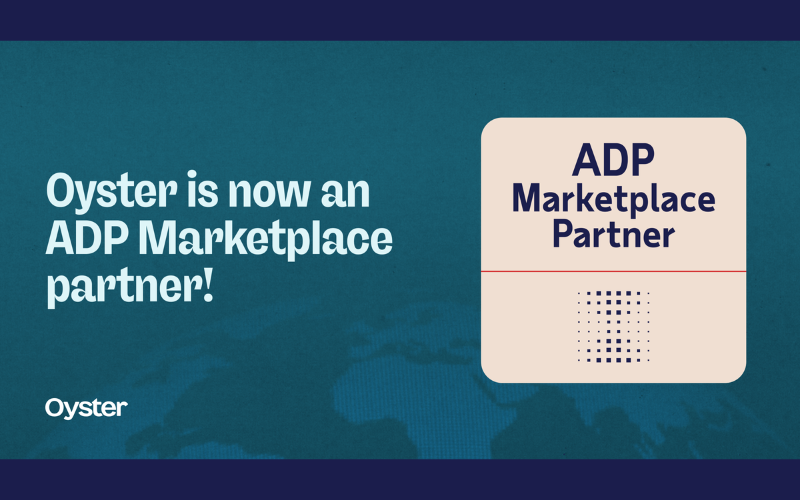
Oyster HR recently rolled out a series of product updates designed to streamline workflows and improve efficiency for HR teams. These enhancements aim to simplify data management, time tracking, authentication, and contractor invoicing processes across the platform.
Key updates include a new integration with ADP Workforce Now for automatic employee data syncing, enhanced timesheet features for better shift tracking, and expanded single sign-on (SSO) options including SAML, OIDC, Google, and Okta.
Oyster also introduced an API for accessing payslips and enabled batch invoicing for contractors in Canadian Dollars.
These updates reduce manual tasks, improve data accuracy, and enhance the overall user experience. Teams can expect faster payroll processing, simplified system access, and smoother financial workflows—especially when managing a distributed workforce.
Verdict: These new features will help Oyster manage payroll with greater efficiency and provide a better user experience.
Paychex Update Notes
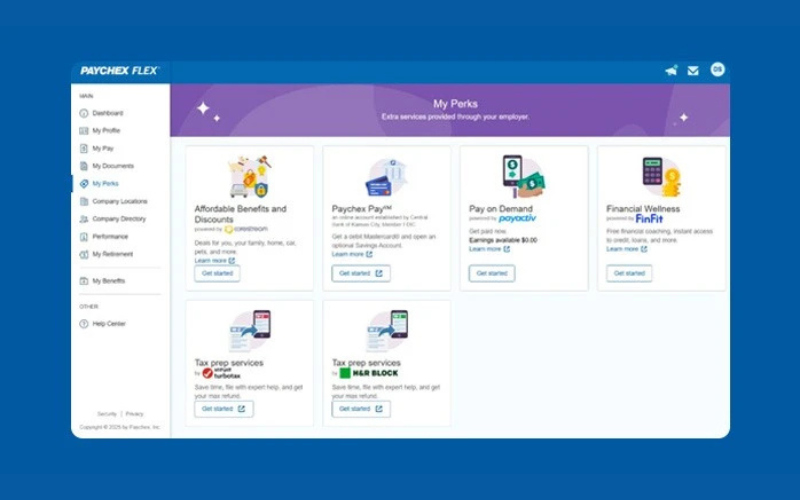
Paychex rolled out several new payroll-focused enhancements to its Paychex Flex platform. These updates are designed to streamline tax season for both employers and employees, while encouraging more accurate and up-to-date payroll information.
A key update is the W-2 Integration & Tax Prep Software Service, which allows employees to access H&R Block or TurboTax directly through the My Perks hub at no cost to employers.
Another new feature, the Annual Employee Checkup, prompts employees to review and update their personal and tax information annually and opt into electronic W-2 delivery.
These improvements help reduce errors, save time, and ease administrative burden during tax season. By keeping employee data current and simplifying tax prep, Paychex supports a smoother, more efficient payroll experience.
Verdict: These updates will improve the user experience for Paychex Flex administrators and employees, simplifying tax season.
Rippling Update Notes
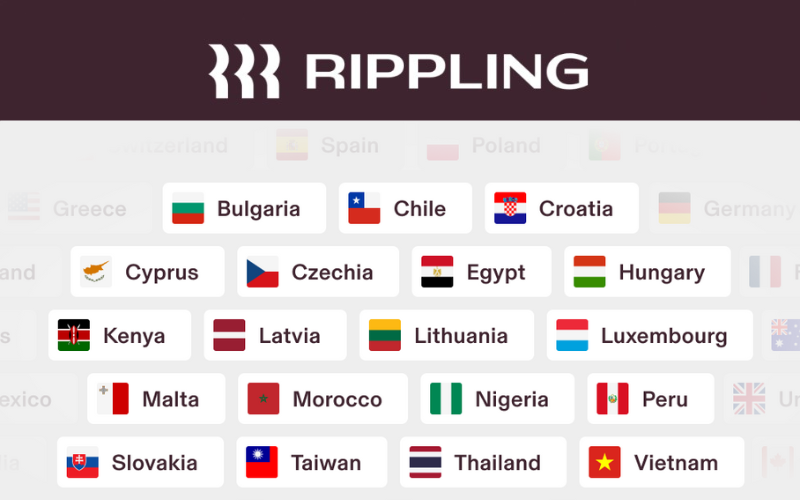
Rippling recently rolled out several product updates, including a new integration with QuotaPath that streamlines commission payments, and expanded global payroll and EOR capabilities.
By connecting QuotaPath’s commission tracking features directly to Rippling, teams can automate commission calculations and payments, eliminate manual data entry, reduce the risk of errors, and ensure accurate, timely compensation for sales employees. This helps businesses manage complex commission structures more efficiently while maintaining data consistency across platforms.
In addition, Rippling has added global payroll and EOR support for 19 new countries, including Belgium, Italy, Norway, and Switzerland, allowing businesses to hire and pay employees compliantly in more regions.
The automation of commission payments helps organizations stay compliant and boosts employee satisfaction through precise and timely payouts. Meanwhile, the ability to onboard and pay employees in 19 additional countries enhances Rippling’s appeal for businesses looking to expand internationally without setting up local entities.
Verdict: These updates help by removing administrative burdens and improving global payroll scalability.
Payroll Software Frequently Asked Questions
Do you have general questions about how payroll software works or how to choose the right system for you? Take a look through these answers to frequently asked questions to get yourself oriented.
Who uses payroll software?
Payroll software is considered both an HR solution and a form of finance and accounting software. It’s designed to simplify payroll workflows for both accounting and human resource departments. As such, it’s commonly used by both payroll administrators and HR professionals in tandem. Some systems also market themselves as payroll software for accountants for those who occupy both roles.
What is the most popular payroll software?
It’s hard to gauge the most popular payroll software overall, but cloud-based payroll software and global payroll software are definitely on the rise. The big names like ADP, NetSuite, QuickBooks Online, or Xero always stand out due to their large user base and strong brand recognition.
However, all the payroll providers in this list are also worthy of consideration. Sometimes the biggest isn’t always the best. If you’re interested in drilling into specific companies, take a look at my best payroll company recommendations as well.
Which payroll software is best for small businesses?
For small businesses, top payroll software includes:
- Gusto, known for its user-friendly interface and comprehensive payroll features;
- QuickBooks Payroll, which integrates seamlessly with QuickBooks accounting;
- Paychex, offering robust payroll and HR services;
- ADP Run, tailored for small business needs with scalable features; and
- Wave Payroll, an affordable solution with basic payroll functions and tax filings.
Each offers strong support, easy setup, and reliable performance to streamline payroll management. Luckily for you, I’ve already researched small business payroll solutions extensively, if that’s what you’re after.
What is same-day payroll?
Same-day payroll (also known as pay-on-demand, on-demand pay, or real-time pay) is a new style of paying employees that shortens the traditional waiting period between their work day and pay day. It rose to popularity during the COVID-19 pandemic as millions of workers suddenly needed access to their earnings in order to cover their basic household expenses.
While many payroll providers can support this type of flexible pay, additional fees may be charged to the company or employee. Companies may choose to put restrictions on any same-day payment services to limit their financial risks and liabilities.
What's the difference between cloud-based vs. on-premise payroll software?
The terms “cloud-based” and “on-premise” refer to how a payroll system is set up and hosted.
Cloud-based payroll software is hosted online, accessible from anywhere, and maintained by the provider—making it ideal for businesses that want flexibility, mobile access, automatic updates, and lower upfront costs. Most cloud-based tools also offer strong customer support and regular data backups.
On-premise payroll software is installed on your company’s internal servers, offering greater control over data but requiring more IT resources. You’ll handle your own updates, security, and maintenance—making it a better fit for organizations with strict data control policies and in-house IT teams.
Tip: If your company runs on Macs, look for cloud-based payroll software compatible with macOS.
What integrations are the most important for payroll software?
Speaking from my own experience, the most valuable payroll software integrations help reduce manual work and ensure data consistency across systems. These integrations include:
- HR Management Systems (HRIS/HRMS/HCM): If your payroll software is separate from your HR system, you’ll want to sync employee data like salary changes automatically so updates flow directly from HR to payroll without duplication.
- Time Tracking Tools: Seamless integration with timesheets is essential. Without it, you’ll spend hours manually reconciling hours worked before each payroll run—trust me, I’ve been there!
- Benefits Administration Software: Connect benefit deductions to payroll to reflect changes in real-time and avoid manual cross-checking. (I’ve also experienced a world without this integration, and wow, it was painful.)
- Expense Reporting Software: If your team files frequent reimbursements, this integration streamlines adding them to payroll, saving time and avoiding errors.
These integrations help eliminate repetitive tasks and reduce the risk of payroll errors caused by disconnected systems.
What data security features are included in payroll software?
Payroll software houses a lot of personal identifying information (PII), including your employees’ names, addresses, contact information, social security or SIN numbers, and personal bank accounts. Here are some of the security features in place to safeguard your payroll data:
- Data encryption: This includes encryption for data that is transmitted as well as stored.
- Multi-factor authentication (MFA): This requires users to complete two or more verification steps to ensure their identity.
- Role-based access control (RBAC): This feature allows system administrators to restrict system access to specific user-based roles within the organization (e.g., payroll administrator, payroll clerk, HR administrator, etc.).
- Regular software updates and patches: These are initiated by the payroll software provider to ensure their software is always up-to-date.
- Secure data backups: Cloud-based backups should be captured regularly in case your information needs to be restored after a data loss event. Off-site data backups can also offer added security too.
- Audit trails: This is a running record of all changes made to payroll data, in case of future discrepancies or unauthorized changes.
What kind of compliance monitoring features are built into payroll software?
Payroll software offers many built-in tools to manage compliance with regional employment laws and regulations. Here’s a list of the most common compliance-related features you can expect to find within payroll software:
- Tax withholdings and filings, including at the federal, state, and local level
- Overtime payment calculations that comply with federal, state, and local laws
- Employee classification tools to determine if a worker should be an employee or independent contractor
- Accurate historical record-keeping for payroll and benefits administration, as required by laws
- Wage garnishment and deduction tools that comply with legal limits
- Equal pay and anti-discrimination monitoring tools
- Leave entitlement accrual tracking that complies with legal requirements
- Year-end tax reporting tools
- Compliance with data security and privacy regulations, e.g., GDPR and others
- Compliance with government bodies like the IRS or CRA
- Workers’ compensation requirements
These features work together to automate many parts of the compliance aspect of paying employees, saving you time and stress.
How does payroll software accommodate different employment types?
Payroll software supports various employment types—like full-time, part-time, and contractors—by offering flexible pay structures, customizable deductions, and rule-based automation for things like overtime or bonuses.
These features allow businesses to set different pay rates, handle contractor payments separately, and stay compliant with tax laws across employee categories. It’s especially helpful for companies with mixed staffing models or shifting workforce needs.
Can payroll software handle multiple currencies for global teams?
Some payroll software is capable of handling multiple currencies offers features like automatic currency conversion, compliance with local tax regulations, and customizable payroll elements for each region. This is essential for businesses with employees in different countries, allowing them to:
- Pay salaries in the local currency
- Adhere to regional employment laws, and
- Manage tax obligations accurately.
Such software simplifies the complexity of international payroll, making it easier for companies to expand globally while ensuring that their payroll operations are compliant and efficient across various jurisdictions.
Why is it important to integrate your payroll software with other HR systems?
Integrating payroll software with other HR systems is crucial for streamlining processes and ensuring data accuracy across other systems, such as time tracking, benefits, and employee attendance tools.
When these systems are connected, time-tracking data automatically feeds into payroll, reducing manual entry and errors, while benefit deductions and absences are accurately reflected in employee paychecks.
Integrating all your HR systems with payroll ultimately enhances efficiency, eliminates redundant tasks, and ensures payroll accuracy, giving HR teams more time to focus on strategic initiatives.
What are PEO payroll services?
PEO payroll services are offered by Professional Employer Organizations (PEOs) that manage payroll processing, tax filings, and compliance for businesses by acting as a co-employer.
They handle employee wages, deductions, and benefits, reducing the administrative burden on businesses. This allows companies to focus on core activities while ensuring payroll accuracy and compliance with labor laws.
Additional Payroll Software Reviews
Want to check out our other reviews related to payroll software? Here are a few more:
- Automated Payroll Software
- Payroll Software for CAD Businesses
- Payroll Services for Small Businesses
- Free Payroll Software
- Payroll Software for Contractors
- Payroll Software for Construction
Modernize Your Payroll Process
There are plenty of payroll software options available, and each one is a bit different from the next. That's why understanding the core functionality of these platforms equips you to pick the right one for your business needs.
Invest in advanced payroll software that satisfies all your business needs, including compensation and salary benchmarking features.
Stay in Touch
Before you go, stay in touch by subscribing to our People Managing People newsletter. We cover everything from how to master your payroll challenges, to how to develop modern compensation packages to retain your top talent. Plus, it's delivered to your inbox for free each week.



